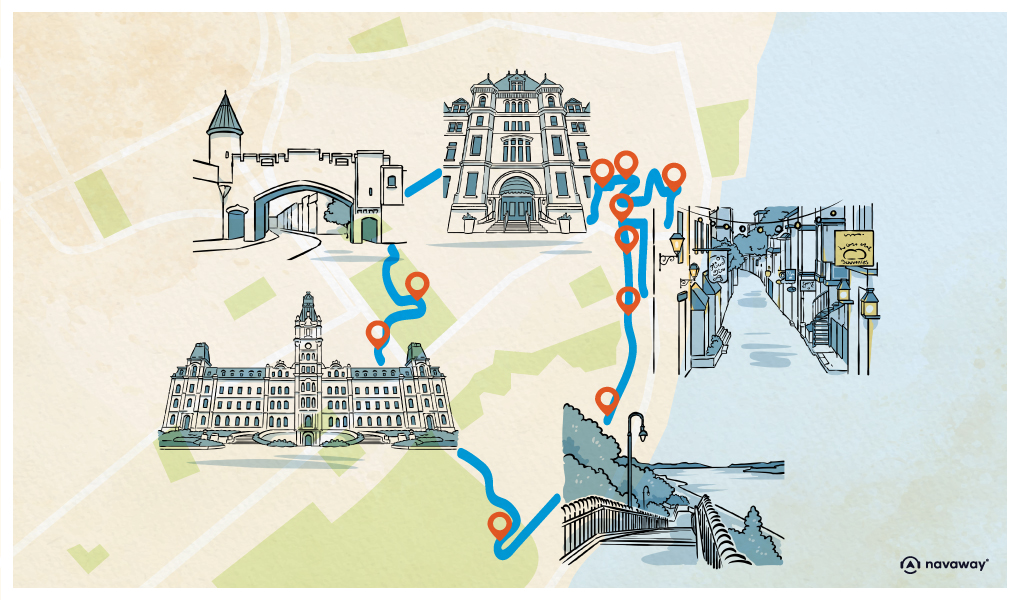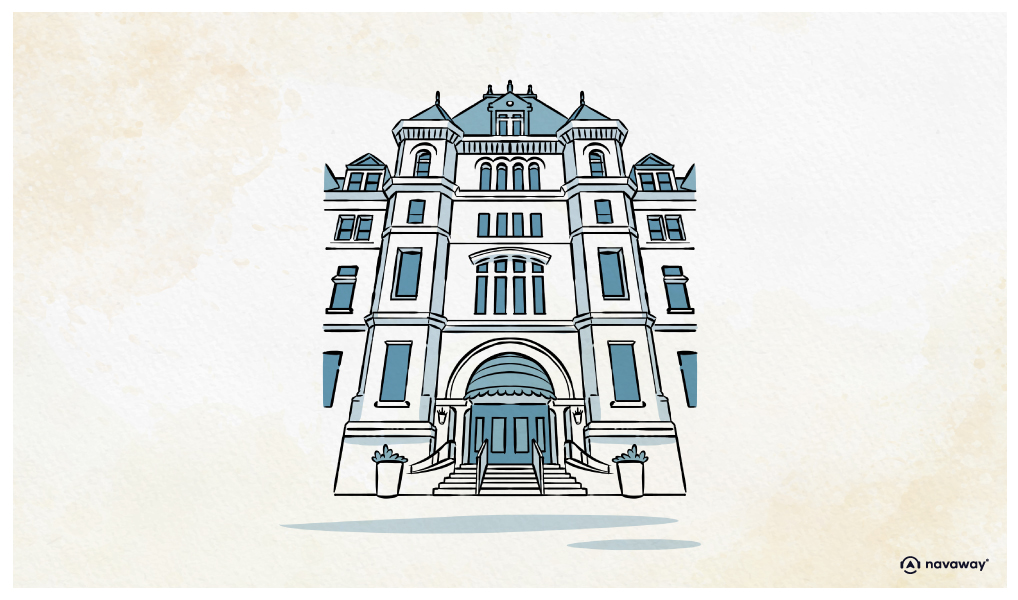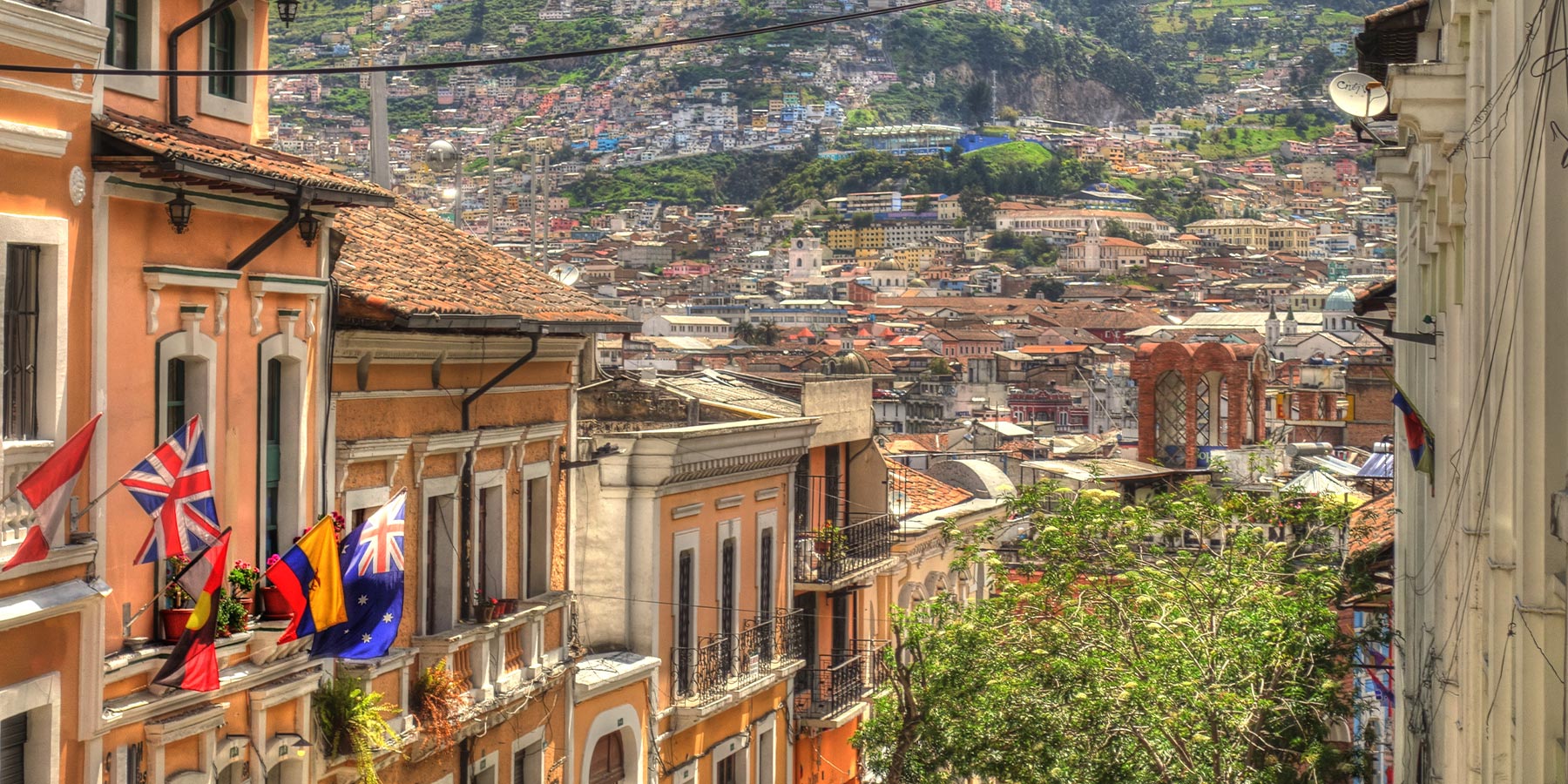
City Hall

This point of interest is available as audio on the tour: Visit Quebec, Whispers of the Past
The building in front of you is one of the most striking city halls in Canada. It was built on the site of an old Jesuit college dating back to the 17th century. The Jesuits arrived in New France in 1625 and established their college in Quebec to evangelise young Indigenous people, before opening it up to European settlers. When the British took control of the city, the college was turned into military barracks. The original building was torn down in the late 1800s. Today, just three stones from the old entrance survive. They were gifted to the City of Quebec in 1978 as a memorial to the site’s long and layered history. Construction of the current city hall began in 1894, based on plans by architect Georges-Émile Tanguay. Its style is a beautiful blend of Second Empire, Romanesque Revival, and Château-style architecture, all typical of the late Victorian period. Architecture lovers will have a lot to admire here. The building has been designated a National Historic Site of Canada, and its gardens are also a popular spot. In summer, the fountains provide a refreshing break and are beautifully lit at night. In winter, the square is transformed into a magical Christmas market. You’ll also see a clock protected by a glass case. This is the Jurassian Clock, a gift from the Republic and Canton of Jura in Switzerland to the City of Quebec, in celebration of its 400th anniversary. It’s an extraordinary piece: one-of-a-kind, with parts that are 300 to 400 times larger than those of a regular wristwatch. It was handcrafted by the Swiss watchmaking company Richard Mille. Take a moment to admire its intricate mechanisms—it’s not just a clock, but a true work of art, blending fine jewellery with high-precision engineering.


Discover Quebec with app
An interactive guide through the most beautiful streets, squares, and districts
24 fun audioguides full of historical facts, anecdotes, and legends





Comments